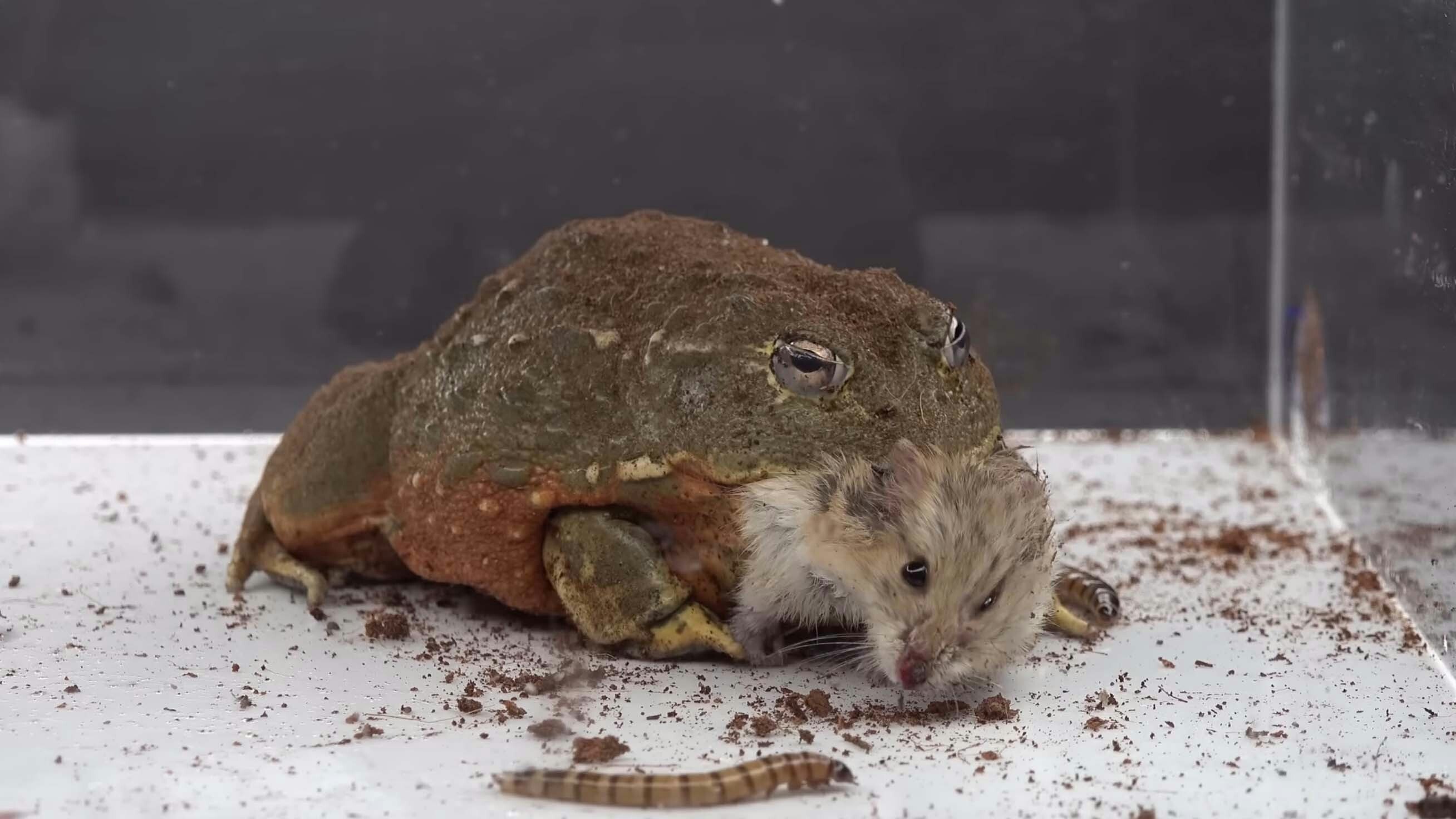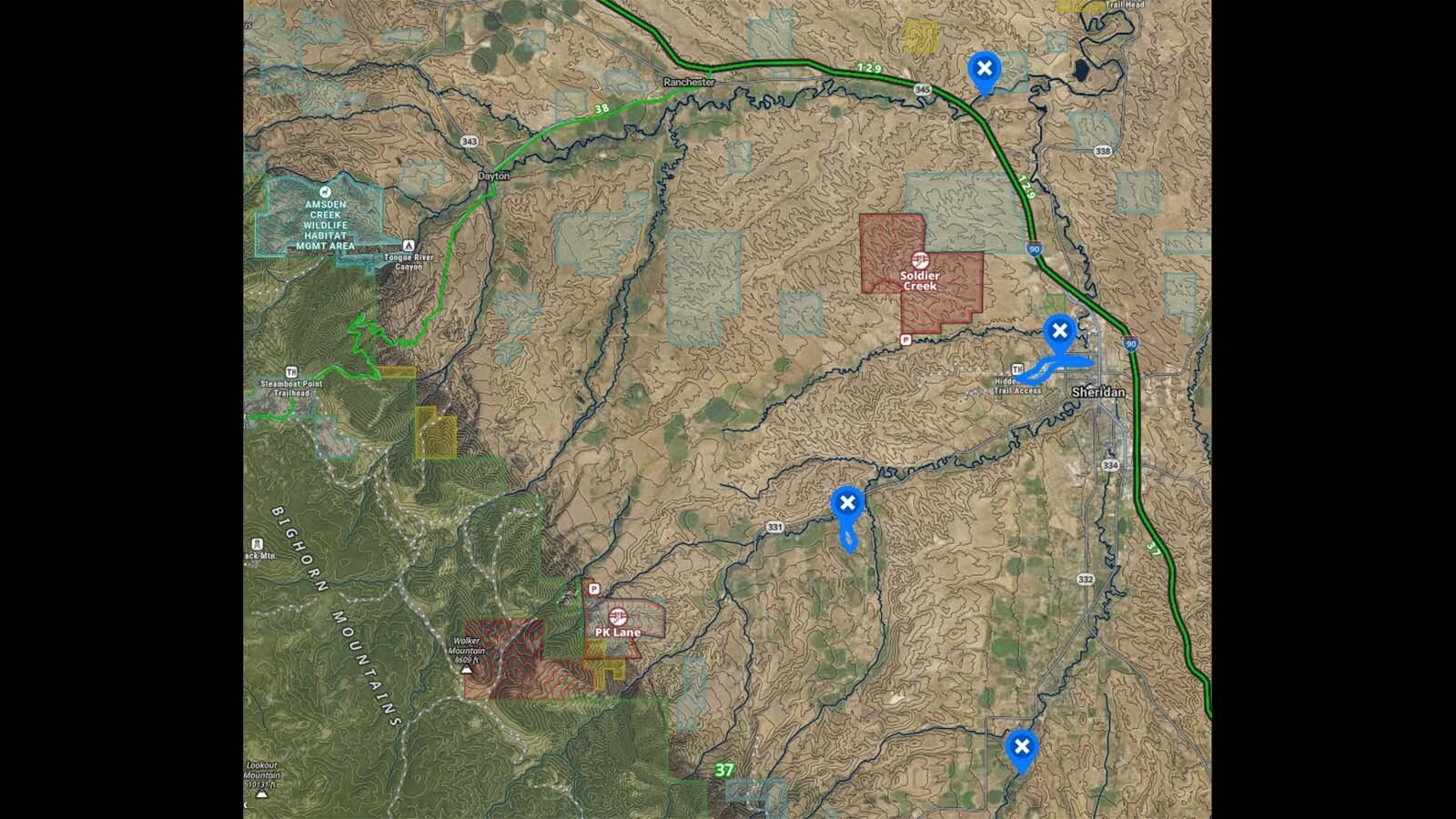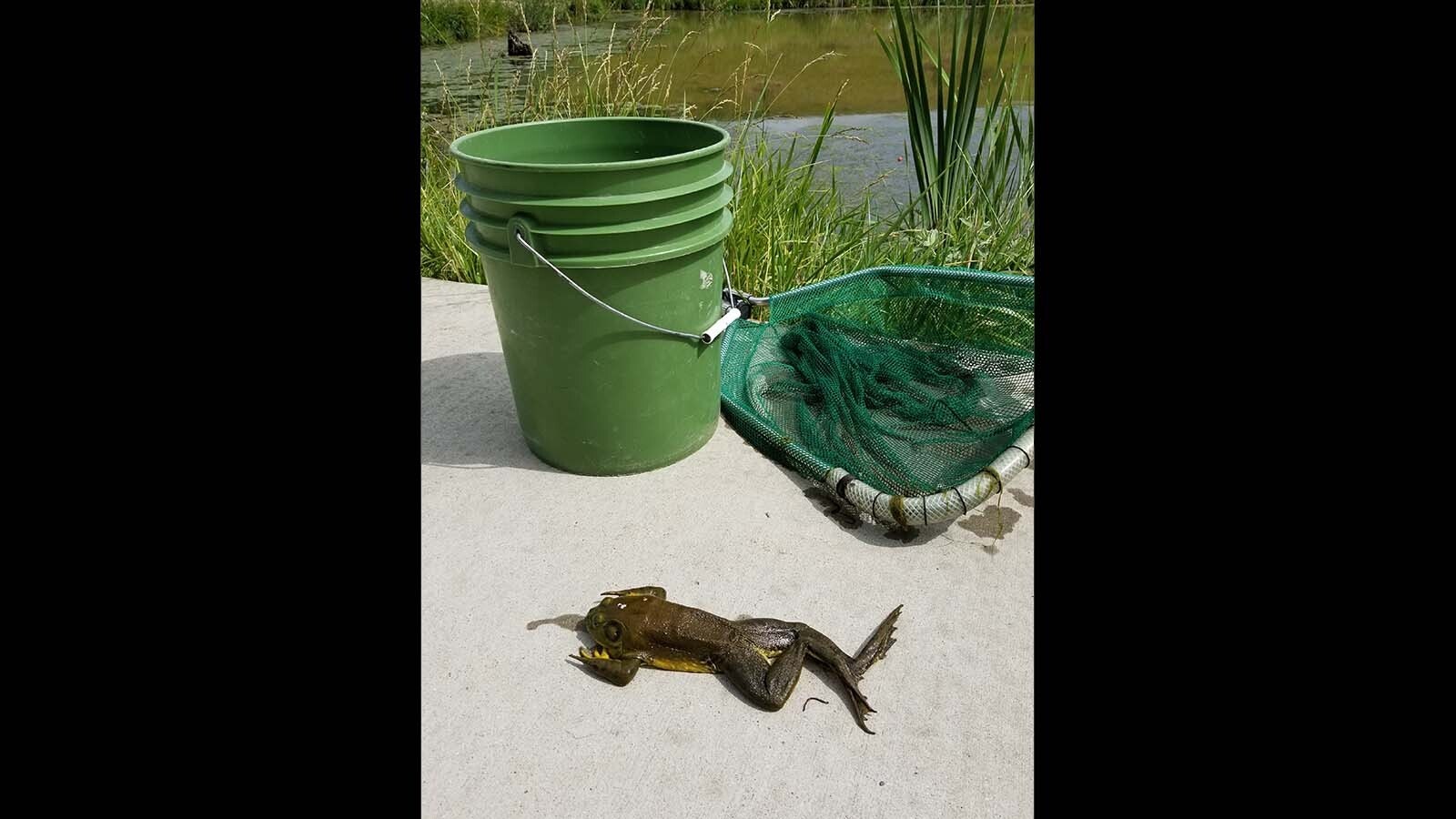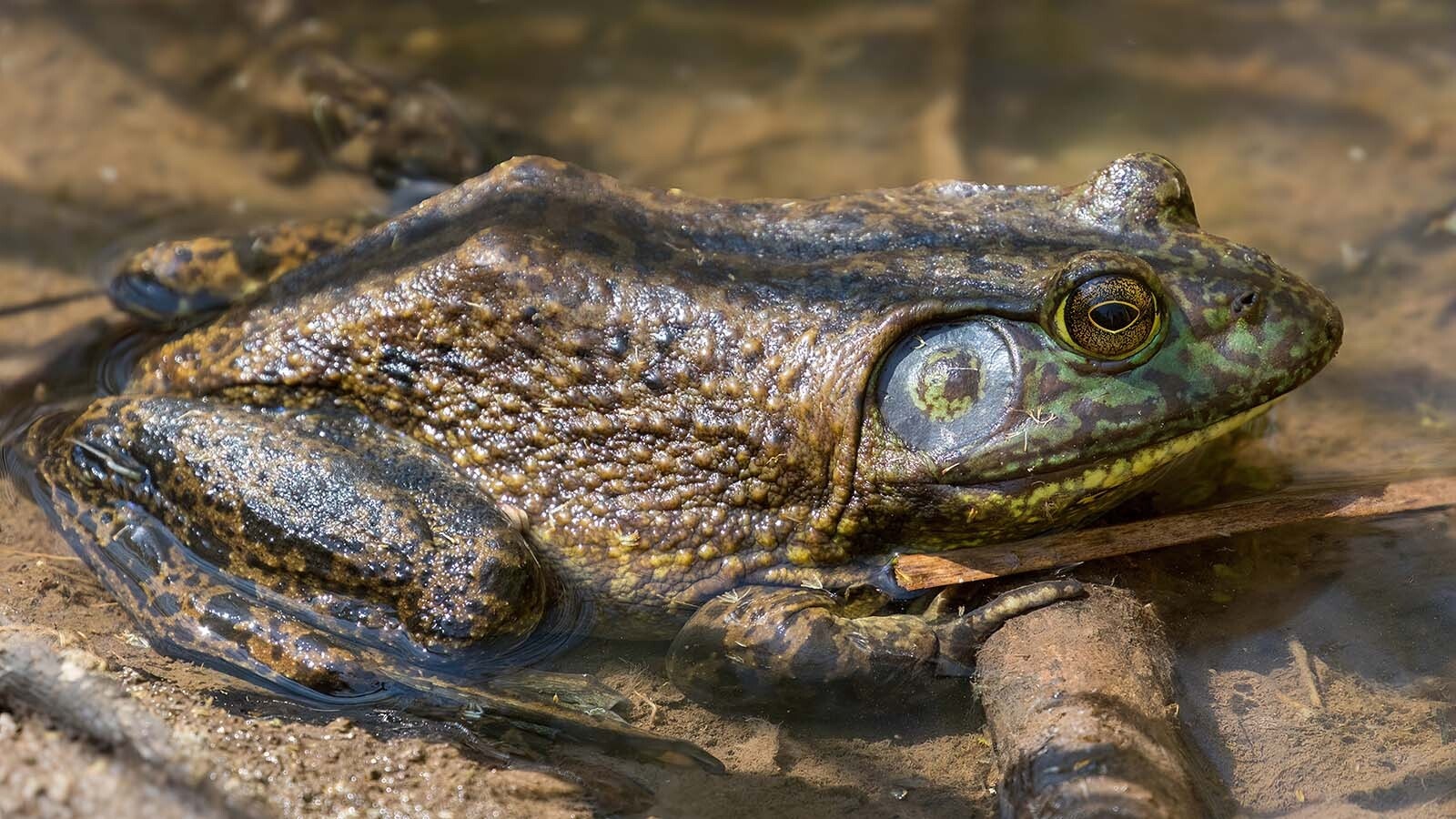Forget about that 2000 Baha Men one-hit-wonder “Who Let the Dogs Out?” because across the West, the question is: Who let the frogs out?
In Wyoming and around the West, populations of American bullfrogs have grown by leaps and bounds in recent decades. So much so that they’re overtaking habitats of native species of amphibians, reptiles, invertebrates and small mammals.
Bullfrogs can get huge and will eat anything, even small animals and any native species in the areas they take over. They’ll even go cannibal given the chance.
Basically, if it fits into a bullfrog’s mouth, it’s fair game.
States have tried various measures in hopes that residents will want to take a crack at eradicating these croakers.
Utah openly encourages bullfrog hunting, even going so far as supplying the curious with a recipe for breaded bullfrog legs; while Colorado permits a year-round, unlimited take policy with a fishing license; and Washington has scrapped the license requirement altogether.
But Wyoming officials have opted for a slightly different approach.

Bullfrog Eradication Is ‘Difficult’
The Wyoming Game and Fish Department has tested some small-scale efforts to reduce the size of the bullfrog populations in a few areas, but those methods have failed to make a significant difference, said Wendy Estes-Zumpf, herpetological coordinator with the Wyoming Game and Fish Department.
“Eradication of an established bullfrog population is difficult,” she said.
Given that dynamic and the possibility that an untrained eye may think all frogs look alike, Wyoming officials don’t encourage the same type of bullfrog bounty as is happening elsewhere.
“At this time, we do not recommend hunting of bullfrogs due to the possibility of misidentifying bullfrogs and some native amphibian species,” Estes-Zumpf said. “Accidentally killing these native individuals can do more harm than good.”
While that may disappoint would-be frog hunters, the public still has a “huge role” to play in preventing bullfrog populations from expanding outside of their current locations, added Reed Moore, the aquatic invasive species specialist with the Wyoming Game and Fish Department Sheridan Region.
Bullfrog Dos And Don’ts
Moore’s recommendations boil down to a list of mostly don’ts:
• Don’t transport any water, animals or plants from one water body to another.
• Don’t keep bullfrogs as pets because it’s illegal to be in possession of them at any stage, from tadpole to adult.
• Don’t release any pet bullfrogs into the wild.
But there is something important the public can do: Report to a local Game and Fish office any sightings or calls of bullfrogs in areas beyond where they are currently known to live, Moore said.
Now is a particularly good time to keep your ears and eyes tuned for bullfrogs, he added.
“During the late summer, bullfrogs are breeding and most vocal, whereas our native amphibians breed and are more vocal in the earlier spring months,” Moore said.

Wyoming’s Bullfrogs
In Wyoming, bullfrogs are prevalent in portions of the eastern plains (especially near Horse Creek), Cheyenne, Kelly Warm Springs outside of Jackson, and Sheridan, Estes-Zumpf said.
Whether they were introduced accidentally or illegally, bullfrogs have been hopping around the North Platte River drainage since at least the 1950s, she added.
“Because their populations can increase rapidly when introduced outside their native range, they can overwhelm and exclude native species either through competition or by preying on them,” Estes-Zumpf said.
Based on the somewhat gnarly photos and videos you can find online, it seems bullfrogs don’t have a particularly discerning diet — they’ve been documented eating rabbits, snakes and even other bullfrogs.
Indeed, American bullfrogs will eat anything that fits in their mouths, and they’re much larger than native amphibians, which is problematic, Estes-Zumpf said.
“Because their populations can increase rapidly when introduced outside their native range, they can overwhelm and exclude native species either through competition or by preying on them,” she said.

Tracking Bullfrog Populations
In addition to public outreach, Game and Fish has been working to map the populations of bullfrogs in the state to determine if they’re expanding.
State officials sample and monitor bullfrog populations annually at several known sites, Moore said.
At Sam Mavrakis Pond in Sheridan, for example, only bullfrogs have been found for the past three years, possibly indicating the loss of other native amphibian species there.
“We are focused on containing current bullfrog populations and working to educate the public, so they are not accidentally or intentionally spread to new areas,” Moore said.






